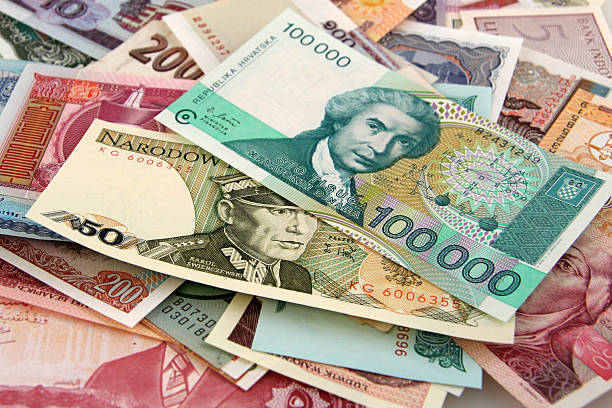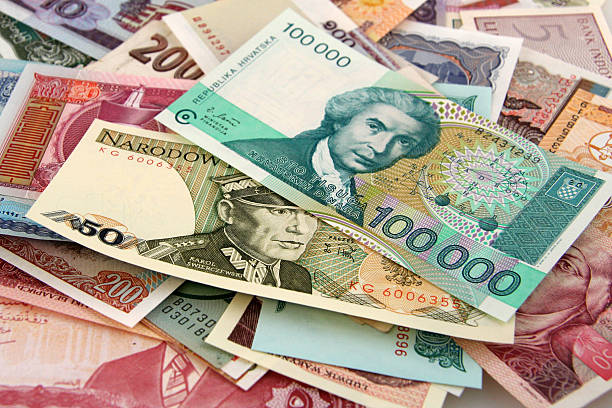
The evolution of banknotes over the centuries has seen steadfast improvements in fabrication techniques, materials used, ink, security features, and printing techniques. Security, especially in the digital age, is the number one concern of Central Banks and printing firms, but the techniques used do allow for a certain artistic creativity flourish. This means producing banknotes with deep-rooted symbolism and imagery, echoing social and political trends of the era.
Banknotes as art and identity
The power of the banknote to reflect a certain patriotism or pass on an ideological message has existed since the 19th century. Iconic landscapes, iconic monuments, or historical figures have always been added in order to underline a certain national fervour. The first portraits of famous individuals began to appear on banknotes in the 1930s, as the modernisation of printing and security processes generalised the polychromatic banknotes.
Since then, portraits of culturally important figures have become the mainstay of banknotes around the world, often reflecting cultural progressivism. In the UK, for example, a £50 banknote featuring the portrait of Alan Turing, the mathematician famous for breaking the enigma code during the Second World War entered circulation in June 2021. Turing was also a key player in the development of early computers, first at the National Physical Laboratory and later at the University of Manchester.
Euro banknotes, on the other hand, are currently based on an “ages and styles” theme, using doorways to symbolise the openness of European society, each based on the style of a certain era (classical, renaissance, gothic, baroque, etc.,), and the next 2024 series will probably showcase historical figures.
In the United States, dollar notes generally celebrate past presidents and Founding Fathers such as Thomas Jefferson, Benjamin Franklin, or Abraham Lincoln. Recent attempts to make Harriet Tubman the new face of the $20 bill, replacing President Andrew Jackson, caused a political uproar on the American right, with former President Trump decrying the move as “political correctness,” highlighting the volatility of emotion surrounding banknotes and their power as symbols of national unity and identity.
Bringing back banknotes from abroad, collecting them, and organising events such as the High-Security Print Awards show, are a testament to the culture that has developed around banknotes.
Finding the balance: symbolism and security
The cultural importance of banknotes means that their production can only be carried out by a niche group of firms or institutions with centuries-old know-how, expert printing techniques, state-of-the-art security features, and a deep understanding of aesthetic value. Indeed, finding a balance between aesthetics and security is one of the main concerns of the modern banknote printer. Art Fiduciaire requires extensive work in research and creativity, but also the use of the most advanced technologies.
A classic example of such a firm is the French banknote printing and security company, Oberthur Fiduciaire. The firm has been a major player in the fiduciary industry for decades, specialising in combining art and technology to produce high-quality banknotes with the cultural symbolism of aesthetic design as well as anti-fraud security features.
Its modern solutions include its Relief™ 3D threads, its Pulsar™ colour shift feature, and its Dynamic™ security feature with optical effects. “Cash is a time-honored instrument, appreciated by people at large, and which has given every proof of proper functioning,” said Oberthur’s CEO, Thomas Savare, when faced with a question on the threat of digital currencies. “Banknote printing is an industry governed by a permanent challenge: that of staying several steps ahead of counterfeiters,” he added, highlighting the never-ending struggle against fraud in the sector. Such a deep understanding of the importance of banknote security and artwork is what drives such firms to seek excellence in their field.
The technological prowess of such firms is key to the successful rollout of banknote designs. Giesecke+Devrient, the German security printing, and secure payments firm, has decades of experience in the field. According to the company’s head designer, Marc Mittelstaedt, banknote design “involves grappling with a combination of different demands, as well as a network of diverse stakeholders. It necessitates creating a story that reinforces security – both in the technology employed and in the user’s perception.”
Like Oberthur, G+D understands the critical balance between aesthetics and security and has developed a range of high-tech security features designed to reinforce fraud prevention. These include cylinder mould watermarks, security threads and foils, embedded covert security, and printed security features.
The idea that banknotes are a reflection of societal trends of any given time is a tribute to their capacity to unify or divide opinion. Art evolves with time, and banknotes have always echoed this, becoming arenas for fomenting patriotic fervour or accentuating progressive ideals. Banknote printers are well aware of the significance of their craft. Extensive work in research and creativity are key to navigating the delicate process of banknote production, respecting security constraints while producing concepts designed to speak to the populace.
Banknotes as art and identity
The power of the banknote to reflect a certain patriotism or pass on an ideological message has existed since the 19th century. Iconic landscapes, iconic monuments, or historical figures have always been added in order to underline a certain national fervour. The first portraits of famous individuals began to appear on banknotes in the 1930s, as the modernisation of printing and security processes generalised the polychromatic banknotes.
Since then, portraits of culturally important figures have become the mainstay of banknotes around the world, often reflecting cultural progressivism. In the UK, for example, a £50 banknote featuring the portrait of Alan Turing, the mathematician famous for breaking the enigma code during the Second World War entered circulation in June 2021. Turing was also a key player in the development of early computers, first at the National Physical Laboratory and later at the University of Manchester.
Euro banknotes, on the other hand, are currently based on an “ages and styles” theme, using doorways to symbolise the openness of European society, each based on the style of a certain era (classical, renaissance, gothic, baroque, etc.,), and the next 2024 series will probably showcase historical figures.
In the United States, dollar notes generally celebrate past presidents and Founding Fathers such as Thomas Jefferson, Benjamin Franklin, or Abraham Lincoln. Recent attempts to make Harriet Tubman the new face of the $20 bill, replacing President Andrew Jackson, caused a political uproar on the American right, with former President Trump decrying the move as “political correctness,” highlighting the volatility of emotion surrounding banknotes and their power as symbols of national unity and identity.
Bringing back banknotes from abroad, collecting them, and organising events such as the High-Security Print Awards show, are a testament to the culture that has developed around banknotes.
Finding the balance: symbolism and security
The cultural importance of banknotes means that their production can only be carried out by a niche group of firms or institutions with centuries-old know-how, expert printing techniques, state-of-the-art security features, and a deep understanding of aesthetic value. Indeed, finding a balance between aesthetics and security is one of the main concerns of the modern banknote printer. Art Fiduciaire requires extensive work in research and creativity, but also the use of the most advanced technologies.
A classic example of such a firm is the French banknote printing and security company, Oberthur Fiduciaire. The firm has been a major player in the fiduciary industry for decades, specialising in combining art and technology to produce high-quality banknotes with the cultural symbolism of aesthetic design as well as anti-fraud security features.
Its modern solutions include its Relief™ 3D threads, its Pulsar™ colour shift feature, and its Dynamic™ security feature with optical effects. “Cash is a time-honored instrument, appreciated by people at large, and which has given every proof of proper functioning,” said Oberthur’s CEO, Thomas Savare, when faced with a question on the threat of digital currencies. “Banknote printing is an industry governed by a permanent challenge: that of staying several steps ahead of counterfeiters,” he added, highlighting the never-ending struggle against fraud in the sector. Such a deep understanding of the importance of banknote security and artwork is what drives such firms to seek excellence in their field.
The technological prowess of such firms is key to the successful rollout of banknote designs. Giesecke+Devrient, the German security printing, and secure payments firm, has decades of experience in the field. According to the company’s head designer, Marc Mittelstaedt, banknote design “involves grappling with a combination of different demands, as well as a network of diverse stakeholders. It necessitates creating a story that reinforces security – both in the technology employed and in the user’s perception.”
Like Oberthur, G+D understands the critical balance between aesthetics and security and has developed a range of high-tech security features designed to reinforce fraud prevention. These include cylinder mould watermarks, security threads and foils, embedded covert security, and printed security features.
The idea that banknotes are a reflection of societal trends of any given time is a tribute to their capacity to unify or divide opinion. Art evolves with time, and banknotes have always echoed this, becoming arenas for fomenting patriotic fervour or accentuating progressive ideals. Banknote printers are well aware of the significance of their craft. Extensive work in research and creativity are key to navigating the delicate process of banknote production, respecting security constraints while producing concepts designed to speak to the populace.





